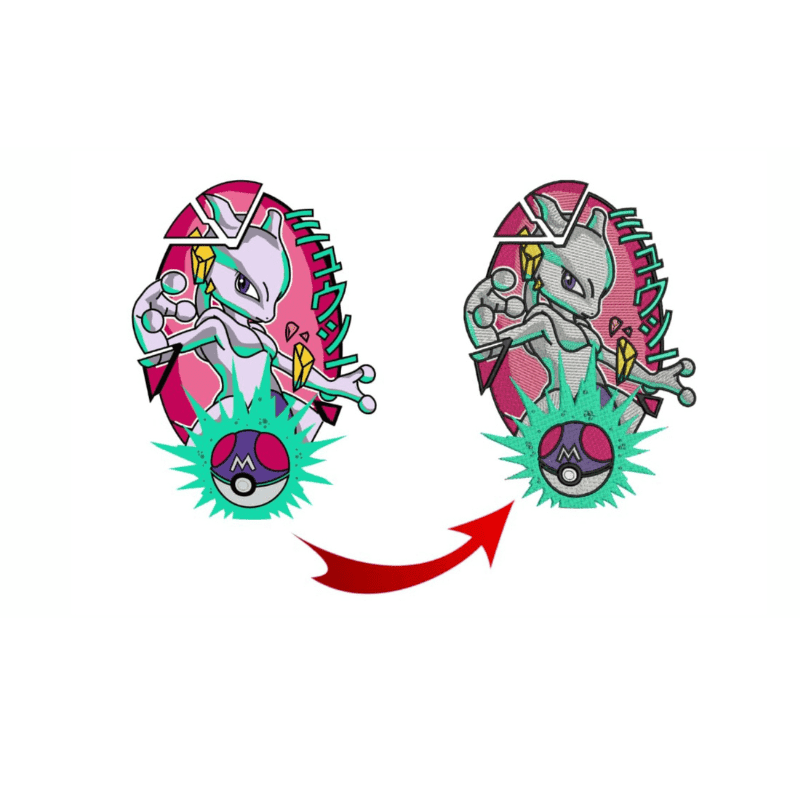Top-Rated Digitizing for Embroidery: Perfect Stitch Whenever
Understanding the Embroidery Digitizing Process: Your Ultimate Overview
Needlework digitizing is a meticulous craft that needs accuracy and experience to equate detailed layouts into digital styles for device needlework. As artisans get started on this trip to master the embroidery digitizing process, a thorough understanding of the fundamentals establishes the foundation for quality. Nevertheless, past the basic knowledge lies a world of innovative software program, specialized tools, and nuanced techniques waiting to be explored. By delving into the nuances of digitizing, one can unlock a world of creative possibilities and raise their embroidery jobs to new heights.

Understanding Embroidery Digitizing Essentials
Needlework digitizing basics create the structure upon which detailed designs are translated into machine-readable layouts for accurate sewing. This initial action in the embroidery digitizing procedure is essential for making sure that the final stitched item is a devoted depiction of the original design. Recognizing embroidery digitizing basics includes comprehending vital concepts such as stitch kinds, sew instructions, thickness, padding, and draw payment.
Sew types play an important function in establishing the visual and textural end result of the stitched design. By choosing the suitable stitch kind, whether it be satin, fill, or running stitch, digitizers can achieve the wanted result and improve the general high quality of the needlework. In addition, stitch instructions influences the flow and measurement of the style, while density identifies the spacing and coverage of the stitches.
Furthermore, padding sewing offers stability to the design by safeguarding the fabric and preventing distortion throughout the needlework procedure. Pull payment is an additional essential consideration to counteract the natural tendency of fabric to agreement when sewn. Understanding these embroidery digitizing essentials is fundamental for creating professional-quality embroidered items.
Picking the Right Digitizing Software Program
Choosing the proper digitizing software is a crucial choice that significantly affects the performance and quality of the embroidery digitizing procedure. Digitizing for Embroidery. When picking the right digitizing software, it is important to consider elements such as the complexity of styles you intend to develop, the user-friendliness of the software, the level of customer support provided, and the compatibility with your embroidery maker
There are numerous digitizing software program options offered in the market, ranging from standard programs for beginners to innovative software for expert digitizers. Some prominent selections consist of Wilcom EmbroideryStudio, Hatch Embroidery Software Application, and PulseID. These software program bundles offer a wide variety of devices and features to aid you create elaborate styles effortlessly.
Before deciding, it is recommended to discover the different software program choices through complimentary tests or demos to establish which one best matches your needs. In addition, reviewing reviews and seeking suggestions from click this link experienced digitizers can give useful understandings right into the toughness and weak points of each software program bundle (Digitizing for Embroidery). By thoroughly examining your needs and comparing the functions of various digitizing software, you can make an enlightened choice that improves your embroidery digitizing operations
Digitizing Tools and Strategies

Optimizing Layout Setup for Embroidery
Mastering the details of layout setups is basic in attaining optimum results in the embroidery digitizing process, structure upon the read this article structure laid by recognizing digitizing tools and techniques. When maximizing design setups for embroidery, it is vital to consider aspects such as stitch kind, thickness, padding, draw payment, and registration. Registration setups straighten various aspects of the design site web properly, preserving total style stability.

Troubleshooting Common Digitizing Issues
When coming across usual digitizing issues throughout the embroidery procedure, it is important to comprehend the source and execute efficient remedies without delay. One usual problem is stitch thickness problems, where stitches may be also thick, causing the fabric to tighten, or as well sporadic, resulting in voids in the style. Changing the stitch density settings in the digitizing software application can assist resolve this issue.
An additional regular obstacle is string breaks during the needlework procedure. This can occur as a result of numerous factors such as incorrect tension setups, dull needles, or making use of low-grade string. Ensuring appropriate maintenance of the needlework equipment, including routine needle modifications and tension adjustments, can decrease the event of string breaks.
Moreover, design enrollment errors can result in misaligned elements within the needlework style. Checking the design alignment in the digitizing software and making necessary modifications before stitching can assist in preventing this concern. By dealing with these typical digitizing problems without delay and successfully, you can guarantee a smoother embroidery process and top notch completed items.
Verdict
In verdict, mastering the needlework digitizing procedure needs a strong understanding of the fundamentals, the ideal option of software program, and understanding of devices and techniques. Maximizing design setups and troubleshooting common digitizing problems are crucial steps in ensuring high-quality needlework results. By adhering to these steps carefully, one can attain precision and effectiveness in the digitizing procedure.